Another in an occasional series on things that never fail to crack me up, for reasons I can never fully explain
If you’ll allow an old 20th century animated cartoon reference:
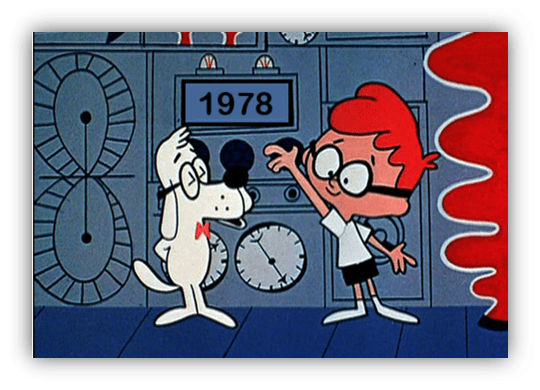
“Sherman, set the WABAC Machine for… “
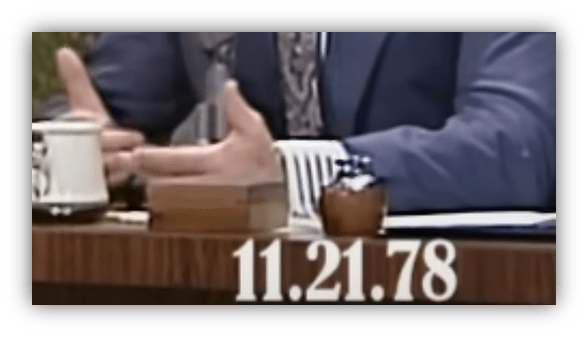
Johnny Carson:
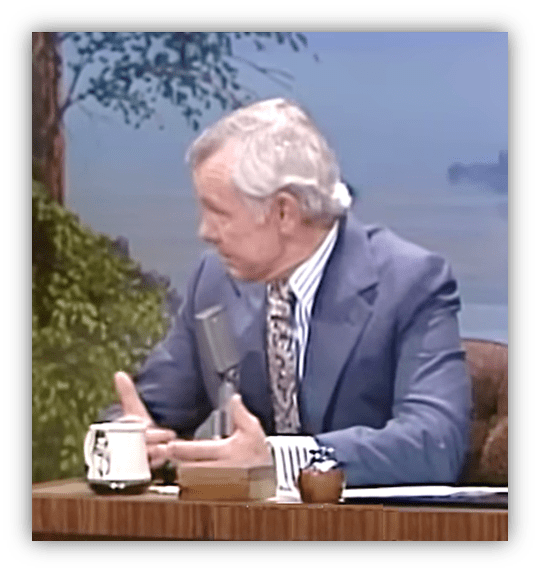
“I understand that you have to leave.“
Steve Martin:
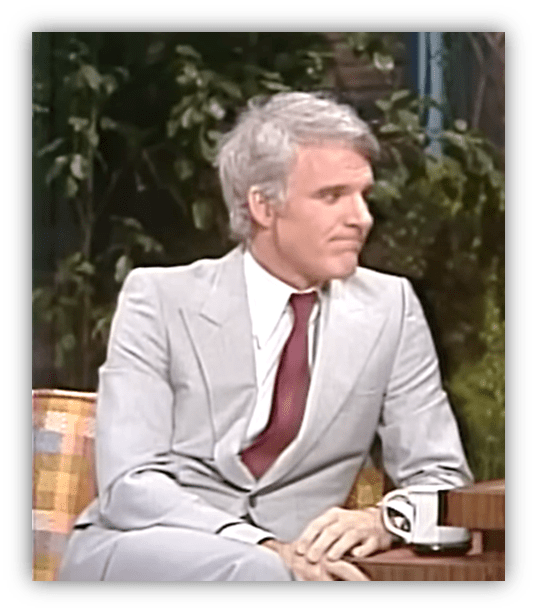
“Yeah… I have to somewhere to be this evening; I’ve have to rehearse -“
“I know – you’re doing a movie?“ “
“Yeah. Carl Reiner, directing.”
“That’s good; that’s pretty good! We can talk about that the next time? “
OK, yes, I’d love to. Thank you, thank you.
{and… exit.}
The most mundane kind of banter posssible. A talk show guest’s interview is complete.
But something’s a bit out of the ordinary. He’s not average Hollywood. He’s in another class.
He’s a busy man. A wild and important guy, as it were.
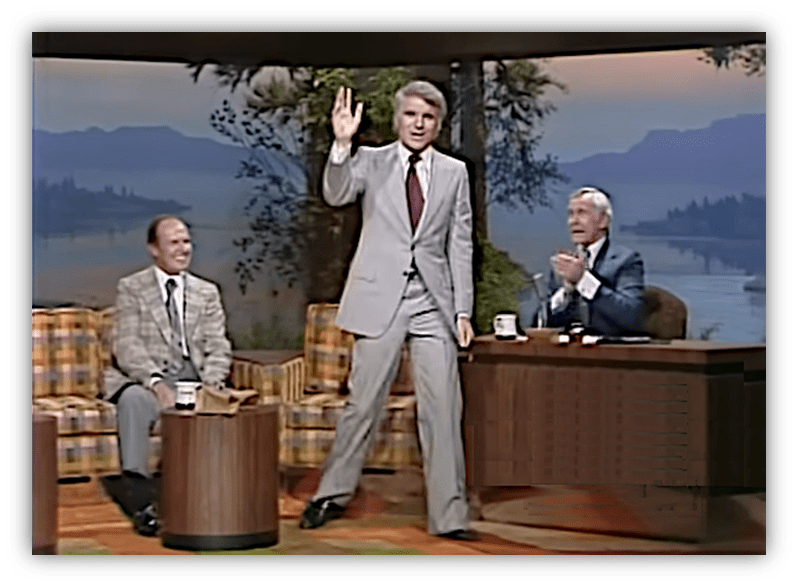
He can’t stay; he really does have to be on his way.
So, that’s that. Stay tuned. We’ll be back with Jack Hanna and a cranky ocelot, right after this word from Alpo.
Unless, of course, the departing guest has a clever payoff; a meta skewering of conventional talk show protocol – just waiting in the wings.
Back in the Carson era, there was a very specific late-night ritual.
When their interview with the host wrapped, the typical guest would slide over, scoot down the couch.
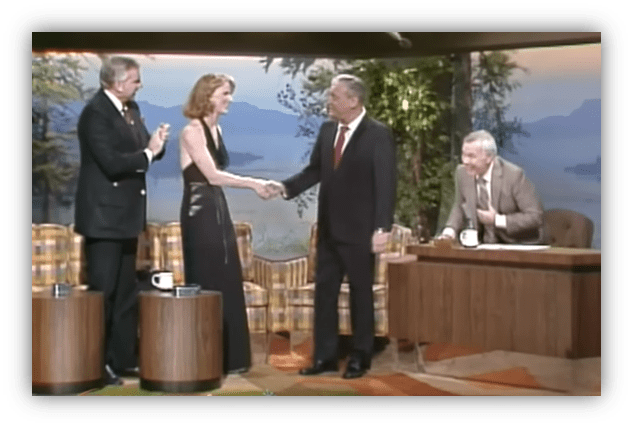
They would then greet the next performer and then sit quietly, while watching and listening to the new featured guest.
But every now and then, that tradition took a left turn. If Bob Hope was booked? Well, simply because he was Bob Hope, a star of immense stature, he wasn’t necessarily expected to stick around for the whole show.
No. Bob isn’t going to sit through a 12:50AM interview with an obscure author plugging the latest trendy SoCal self-help book.
Bob has somewhere to be.
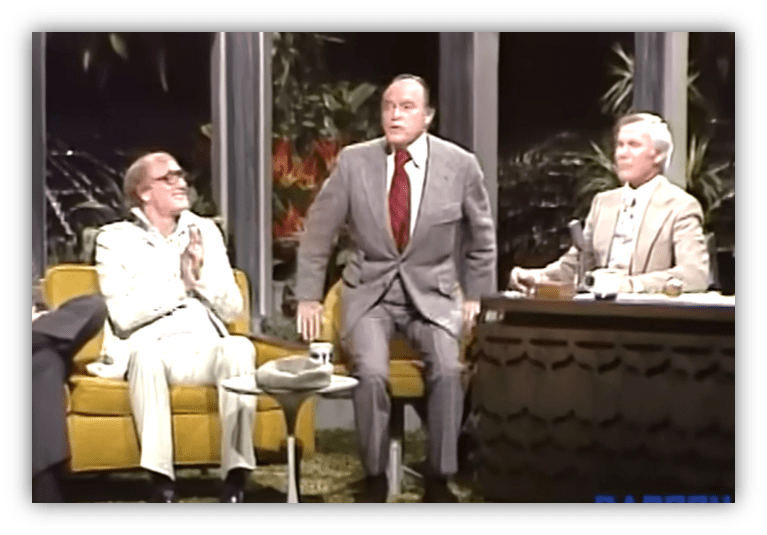
Bob definitely has a private charter helicopter idling on the roof, ready to whisk him away to the tune of “Thanks for the Memory,” long before the credits rolled.
It was an unspoken rule. It was a select group, but everyone knew exactly who was worthy of the royal disappearing act.
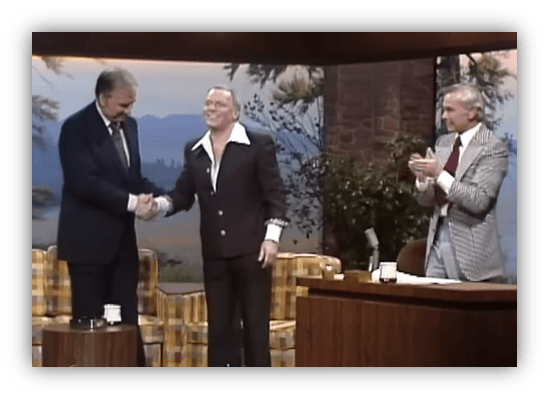
The moment wasn’t an inconvenience; it was a power move.
It told America: This person is so in demand, they can’t even stick around for the whole hour.
A bit of bio – because context is half the joke
It’s hard to overstate just how huge Steve Martin was by late 1978.
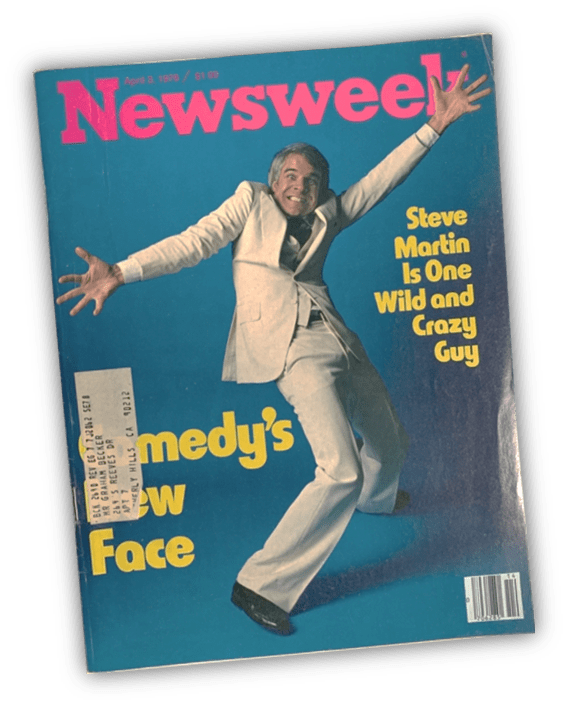
He was absolutely everywhere.
The banjo playing, former Disneyland street comic magician had been writing for The Smothers Brothers Comedy Hour. He even won an Emmy in 1969. Wanting to pivot to performing, he waded into stand-up. And in the mid 1970’s, burst onto the national stage.
Martin’s persona was a weird composite of an unctuous and obnoxious performer who thought he was amazing, and simultaneously: a baffled outsider awkwardly stumbling through the chaos. Part self-confident showman, part charmingly clueless goofball:
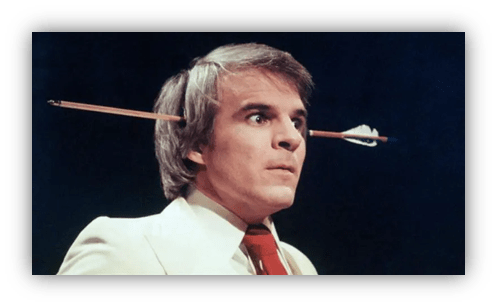
A bizarre, anarchic persona that made balloon animals, and sported an unexplained fake arrow through the head.
He became a wild and crazy guy, literally: His A Wild and Crazy Guy album, released in 1978, went double-platinum, reached Number 2 on the U.S. charts, and won a Grammy.
Whether or not you liked his style of humor, it could not be denied:

At this stage of his career, Steve Martin wasn’t just a comedian, he had become a cultural event.
Which is exactly what made his “I have to leave” bit both a parody of late-night etiquette and a sly jab at celebrity self-importance.
The setup and the payoff
Acknowledging the urgent work commitment, Carson graciously cues Steve out.
You hear the disappointed groan of the studio. Steve stands up, waves goodbye, and heads backstage.

Martin’s mock-sad nod, the audience’s collective “awww,” Carson’s sympathetic shrug: all of it tightropes between sincere emotion and complete absurdity. What follows next is an unexpected surprise that no one -perhaps even Johnny, saw coming.
So: What’s So Funny About It?
Why does this ridiculous “inside show-biz” bit make me laugh?
The beautiful thing about great misdirection comedy is that it works even when you know it’s coming. Maybe especially when you know it’s coming.
But I’ve watched this bit dozens of times.
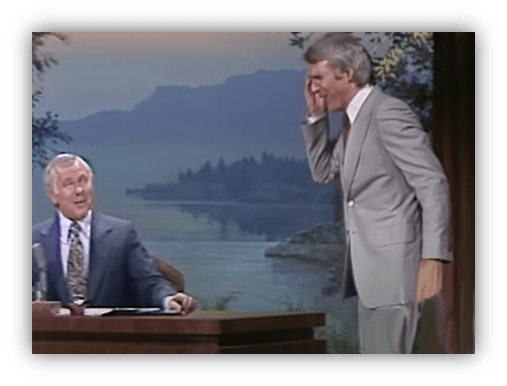
And I think Martin’s commitment to the fake urgency caught everyone, to include Carson, completely off guard.
After the polite build-up to his exit, the reveal delivers a warm, mischievous joy. It’s like being let in on a secret; a shared joke between performer and host. “Yeah, the early exit thing? It’s reserved for the biggest stars. And it’s pretentious as hell.”
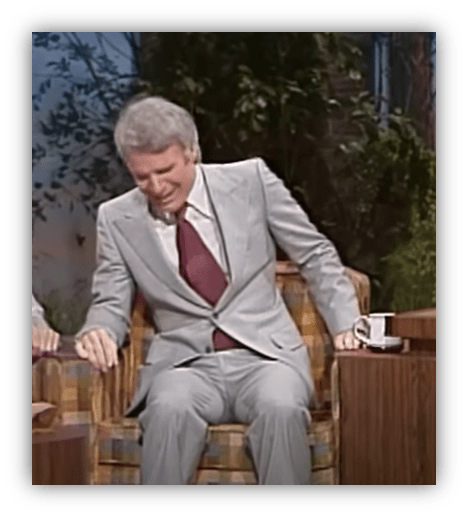
Steve’s pacing, notably during his change of heart, is dead-on. The patience he shows as he waits for Carson and the audience to figure out the joke is perfection.
The whiplash turnaround is a great ride. Within 10 seconds, we go from watching A Triumphant Exit By A Big Star to someone channeling a whimpering child caught in a fib.
I love the meta nature of the whole construct:
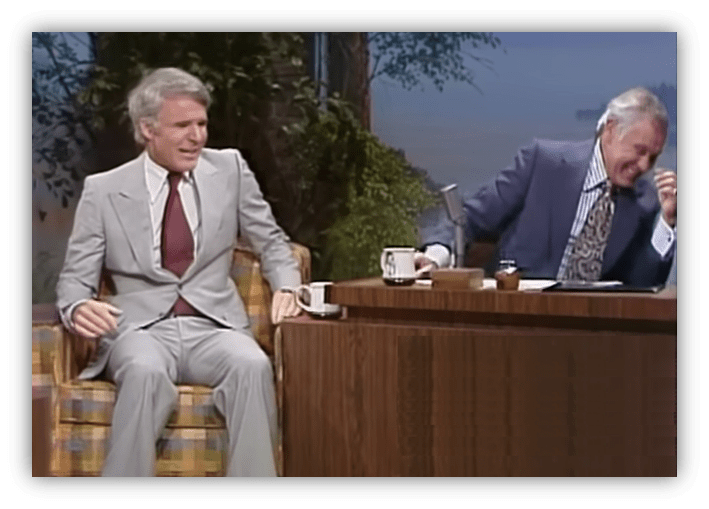
In under two minutes, Steve brilliantly mocks late night convention. All while sitting right in the middle of it.
You sense Johnny’s raised eyebrow, the studio’s subtle collective sigh, and Steve’s gleeful refusal to play by the usual script.
As we all know, comedy is subjective. But this bit kills me. See if you agree:
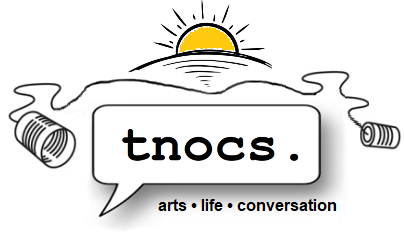


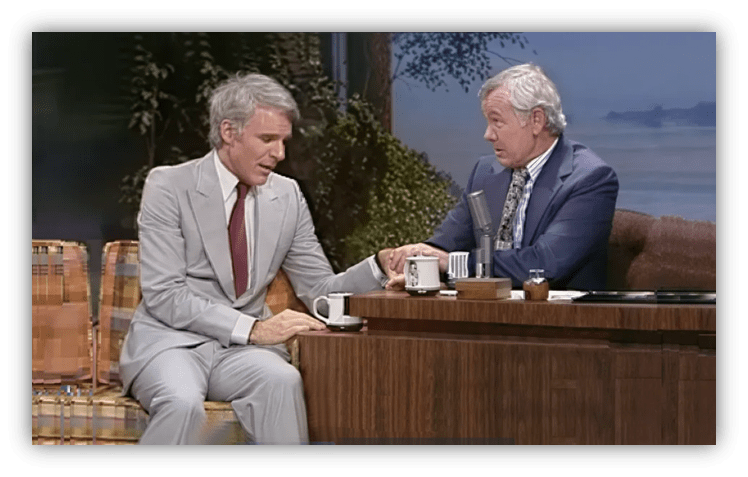
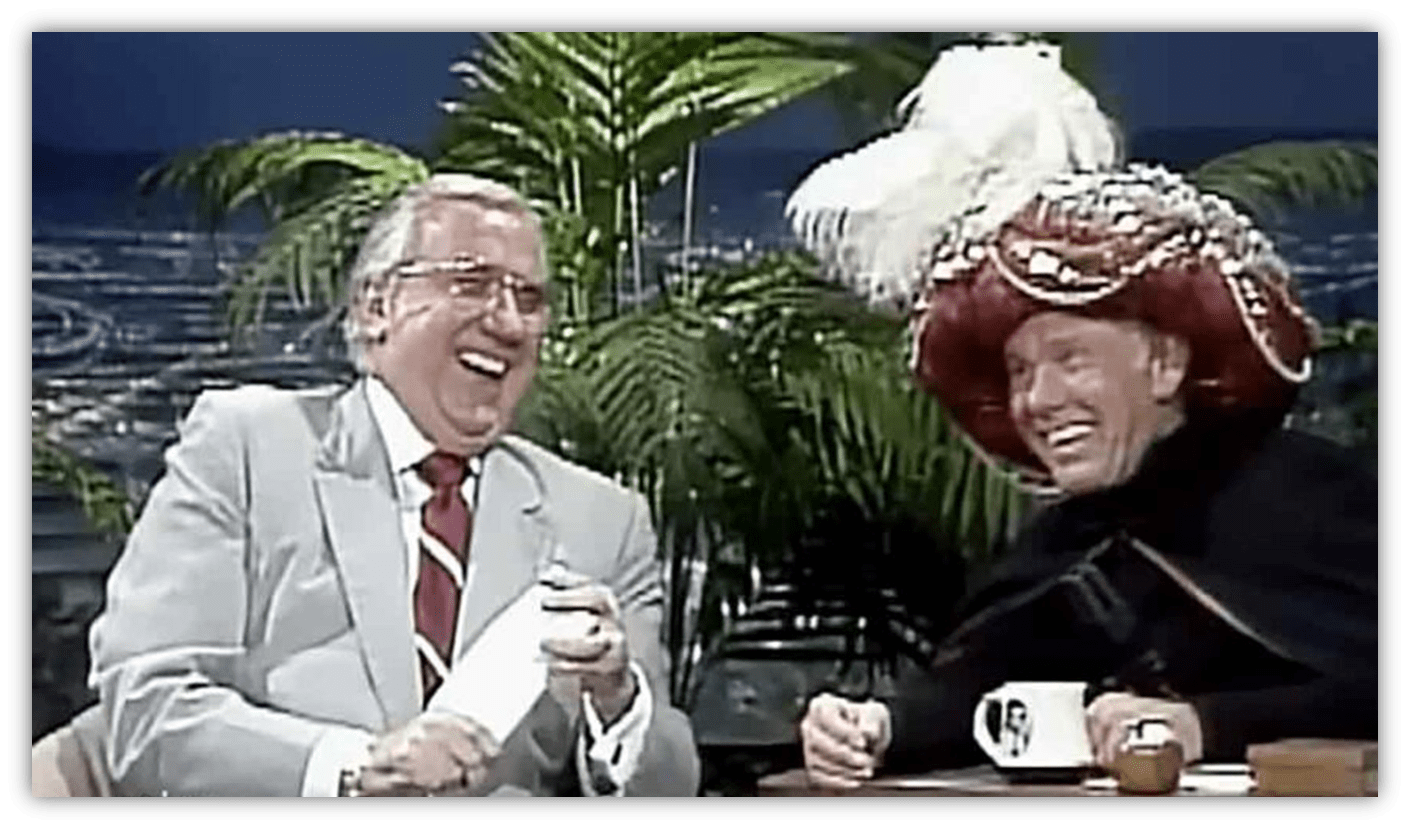
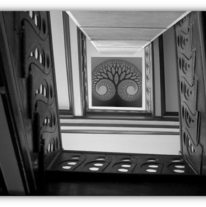
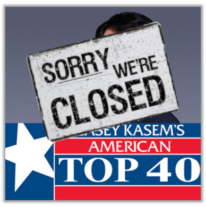
Carrot Top used to make me laugh.
He killed on Carson.
Johnny signaled for him to take a seat.
Walter Cronkite was sitting in the first chair.
Mr. Cronkite didn’t budge.
Carrot Top took the second seat. I remember this because I felt bad for him. He sat hunched over, looking sheepish, as they went to commercial.
Oh, wait. I was addressing the part of the essay about how famous people have somewhere to go. Walter Cronkite had nowhere to go. I should write something about Steve Martin.
Two things to add here:
1) Bob Hope didn’t have to leave The Tonight Show for anything big usually other than his ego. The man lived in Toluca Lake, just only about 4 miles southwest of Burbank, where The Tonight Show was taped. He had only about a 10-minute drive to and from his house. And he used to have his own makeup man come to his house to prepare him for doing the show. Back when The Tonight Show ran 90 minutes, it’s entirely possible that Hope spent less time than that coming to the show, doing his appearance and then getting home.
2) That same show where Steve Martin did his bit, Anthony Quinn followed him and said he had to do the same thing, only to sheepishly come back on the show afterwards. Steve was in hysterics after seeing this bit carried off brilliantly by Anthony.
I missed out on Steve Martin’s glory years. I’d have liked to have discovered him when he was fresh and new in stand up. I caught up with him through late 80s films like Roxanne, Three Amigos, Planes, Trains and Automobiles and most gloriously in Little Shop Of Horrors. After LA Story he seemed like a lost talent.
Thank goodness for late career redemption with Only Murders In The Building. Steve and Martin Short (the whole cast really) are perfect together. Its required family viewing in our house.
I first became aware of him on SNL, and I’m grateful to have experienced that moment in time.
Steve Martin is one of the funniest men alive and part of the reason is that he is never afraid to make himself part of the joke.
When I was a single digit kid, I didn’t try to get into Steve Martin, because he was one of the “dirty” comedians, like Richard Pryor, etc. But over the years I’ve realized that he can be the dirty comedian if that’s the audience he’s serviing, but he’s not reliant on dirty jokes like some always seemed to be. He can be perfectly hilarious without the blue humor.